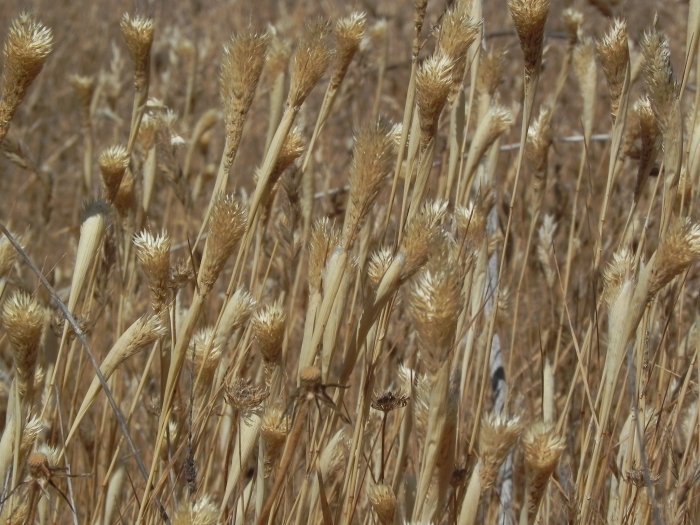Harding Grass
(Phalaris aquatica)
Harding Grass (Phalaris aquatica)
/
/

© James Connolly Davis
CC BY-SA 4.0
Image By:
© James Connolly Davis
Recorded By:
Copyright:
CC BY-SA 4.0
Copyright Notice:
Photo by: © James Connolly Davis | License Type: CC BY-SA 4.0 | License URL: http://creativecommons.org/licenses/by-sa/4.0/ | Uploader: toyonito | Publisher: iNaturalist |





































Estimated Native Range
Summary
Phalaris aquatica, commonly known as Harding grass or bulbous canary-grass, is a perennial herb that is erect and reaches waist height. It is a bunch grass with grayish to bluish-green leaves and dense, spike-like flowering heads that are 2-5 inches long. Originally native to the Mediterranean region, including Southern Europe and the Caucasus, it thrives in a variety of habitats such as grasslands, open woodlands, and areas near streams or rivers. It has become naturalized in regions like South Africa, Australia, New Zealand, and the USA. Typically, this species can reach up to 3 feet in height and has a similar spread.
Harding grass is valued for its rapid growth and ability to incorporate soil nitrogen quickly, making it useful for pasture and fodder for grazing livestock. It is also used for erosion control due to its robust root system. In cultivation, it prefers full sun to partial shade and tolerates a range of soil types, though it thrives in moist, well-drained soils. While it can be beneficial in its native range, Phalaris aquatica is considered invasive in some areas outside of its native habitat, where it can outcompete native species and disrupt local ecosystems. Gardeners should be cautious and check local regulations before planting.CC BY-SA 4.0
Harding grass is valued for its rapid growth and ability to incorporate soil nitrogen quickly, making it useful for pasture and fodder for grazing livestock. It is also used for erosion control due to its robust root system. In cultivation, it prefers full sun to partial shade and tolerates a range of soil types, though it thrives in moist, well-drained soils. While it can be beneficial in its native range, Phalaris aquatica is considered invasive in some areas outside of its native habitat, where it can outcompete native species and disrupt local ecosystems. Gardeners should be cautious and check local regulations before planting.CC BY-SA 4.0
Plant Description
- Plant Type: Grass
- Height: 2-4 feet
- Width: 2-3 feet
- Growth Rate: Moderate, Rapid
- Flower Color: N/A
- Flowering Season: Spring, Summer
- Leaf Retention: Deciduous
Growth Requirements
- Sun: Full Sun, Part Shade
- Water: High
- Drainage: Medium, Slow
Common Uses
Erosion Control
Natural Habitat
Originally native to the Mediterranean region, including Southern Europe and the Caucasus, and thrives in grasslands, open woodlands, and riparian zones
Other Names
Common Names: Tub Canary Grass, Bulbous Canary-grass
Scientific Names: , Phalaris aquatica, Phalaris altissima, Phalaris aquatica var. aquatica, Phalaris aquatica var. hirtiglumis, Phalaris aquatica var. major, Phalaris aquatica var. stenoptera, Phalaris arundinacea subsp. bulbosa, Phalaris bulbosa, Phalaris bulbosa var. alata
GBIF Accepted Name: